
A Short Guide to the Sumatran Short Tail Python (Python curtus)
By: Randilyn Halvorsen
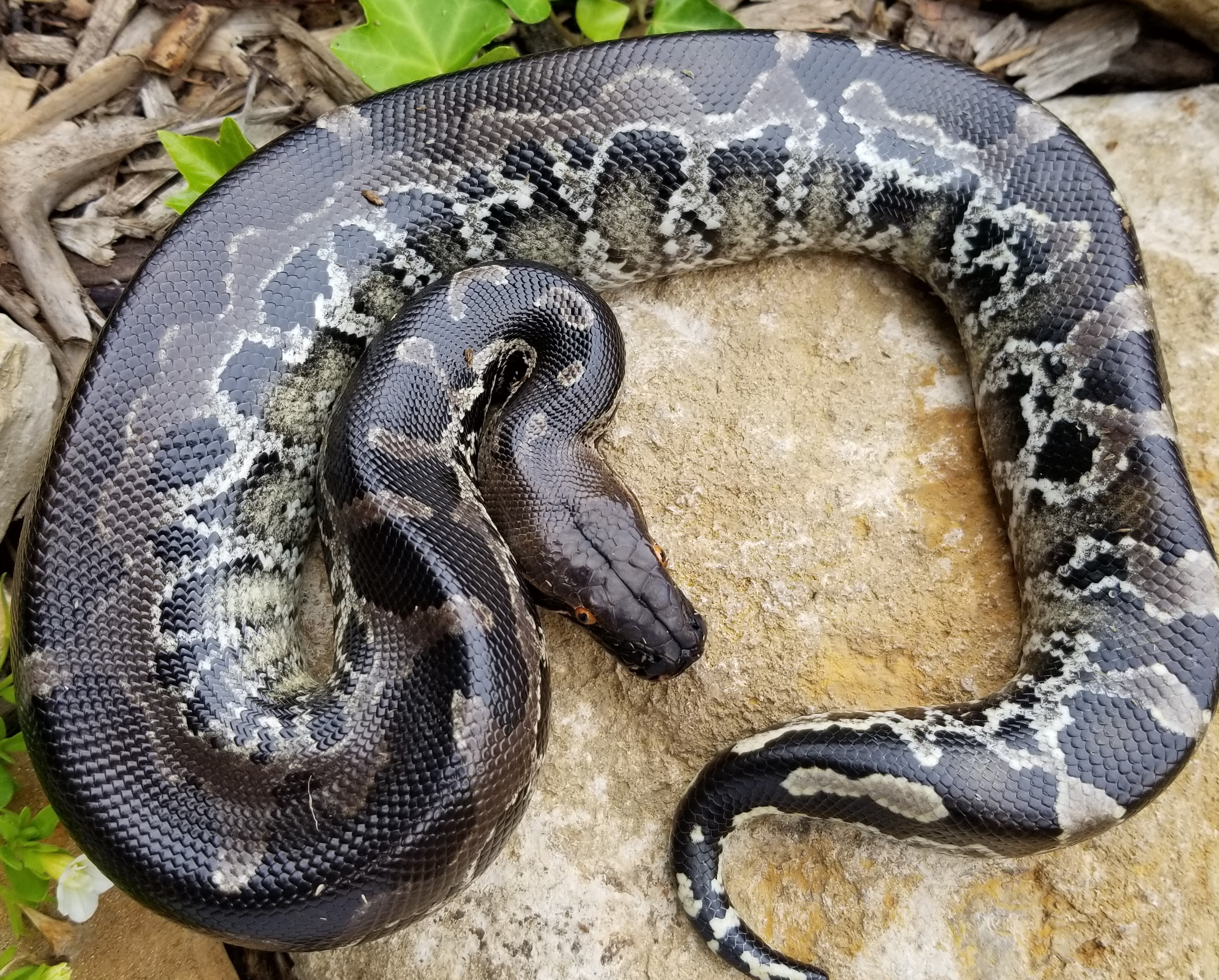
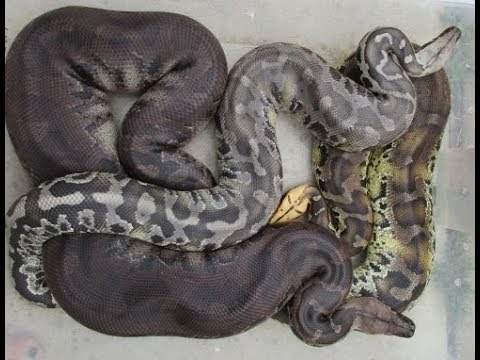
Big snake feel, small package
The Sumatran Short Tail python is a stocky dark colored python that gives off a “big snake” vibe while staying a manageable length. They are closely related to Blood pythons but are a separate species. Sumatran short tail pythons have a reputation for being moody but this belief is out of date and undeserved. In recent years, they have grown in popularity as selectively bred color palettes become more available. They come in several natural color variations, black head (Southern), chrome head, orange head (Northern); and one morph within the orange heads, the caramel albino. Hatchlings are typically lighter in color and become much darker with age.
Sumatrans are truly my favorite species due to their intelligence and the raw impressiveness of a mature adult in its prime. This species was one of the first reptiles I bought as a teenager and the first snake species I produced. This write up is simply how I keep Sumatran Short tail pythons based on my experience of keeping and breeding them in captivity.
Scientific name: Python curtus
Common names: Sumatran short tail, Sumatran, Shorty, SSTP, curtus
Natural History: Originating from the island of Sumatra, these short tail pythons live a terrestrial life as ambush predators near water’s edge or swampy rice plantations. They prefer dark and cramped hiding places such as burrows, leaf litter and low hanging palm fronds. Sumatran short tail pythons face many challenges in the wild such as exploitation for the skin trade and deforestation.
Lifespan: 15-25+ years
Average size: 4-5 feet long. Weighing in around 15-20 or more pounds, with males being only slightly smaller than females.
Husbandry Basics
Temperature: A heat gradient of 78 F cool end and 83 F warm end.
I run ambient room temperature via oil filled radiator and wall-mounted fan. They don't recieve any additional heat unless it is female I know to be expecting eggs. In which case, I provide an Under Tank heat source connected to a thermostat set to 86 degrees F.
Humidity: High: 70%+
A large water bowl and humidity holding substrate will help maintain proper levels. It is important to have adequate ventilation and air flow. Short tail pythons are prone to respiratory infections when exposed to stale wet conditions. Each reptile space will need fine tuned for humidity. I keep substrate fairly wet and dump water bowls into it often, because I run a wall mounted fan in the room this doesnt grow mold like it might in other setups with less air flow.
Feeding: Short tails will readily accept frozen/thawed rats.
-Under one year old should be fed weekly.
-From two - four years they should be fed every 2 weeks.
-As an adult, a large rat every 3 weeks (or less often) is appropriate.
Short tail pythons may be a thick wide-set snake, but they are also prone to obesity. They have prominent spines and it should be visible, if the spine starts to disappear it is overweight. Overfeeding will lead to health problems and a shorter life span.
Enclosure: This species prefers private dark enclosures with lots of hiding spaces to feel safe. NO AQUARIUMS for this species PERIOD. As a hatchling, they need small tubs (like a shoebox) for about the first year. As an adult, a 4ft x 2ft x 2ft enclosure or larger will suffice. Lighting is not required. They need a large water bowl and multiple places to hide. Substrate can be anything as they do like to burrow, but cypress mulch or coco chip is easy to maintain and helps keep humidity high. I keep all my adult shrot tails in front opening 4ftx2ft enclosures with deep substrate and clutter. Filling large spaces with clutter is important for short tails as they will feel more secure. If kept in a rack system (especially as babies), clutter isn't as important because they find security in the confinement of the tub itself.
Bowel movements: It is normal for a Sumatran short tail python to withhold defecating for several months. It's been noted they can have no bowel movement for up to a year. They do, however, urinate A LOT; therefore a strict cleaning regime must be upheld!
Tap training: Short tail pythons can have a hard fast food response. To avoid being the target of this, it is important to always approach the snake with caution. We don’t know if they’re asleep, calm or ready to eat. It is suggested that a snake hook (or other object) be used to gently tap the snake when first approaching. Once the snake is aware of you, use the snake hook to move their face in the opposite direction of you. Then, reach in and grab the mid-section of the body and begin to lift them out. Sumatran short tails are smart and instantly drop out of food mode when tap trained.
Handling: Sumatran short tail pythons do not hold onto you like many other snake species do. They’re kind of like limp fish. Since they are very terrestrial, they are afraid of falling and will freak out or thrash if they don’t feel secure. It’s important to go slow and support their entire bodies when handling. Avoid hovering over them or getting in their face. Short tail pythons have distinct body language and hiss often, they will communicate with you when they are uncomfortable.
Reproduction: Coming Soon
Color Variations:
Pumpkin (orange) Head
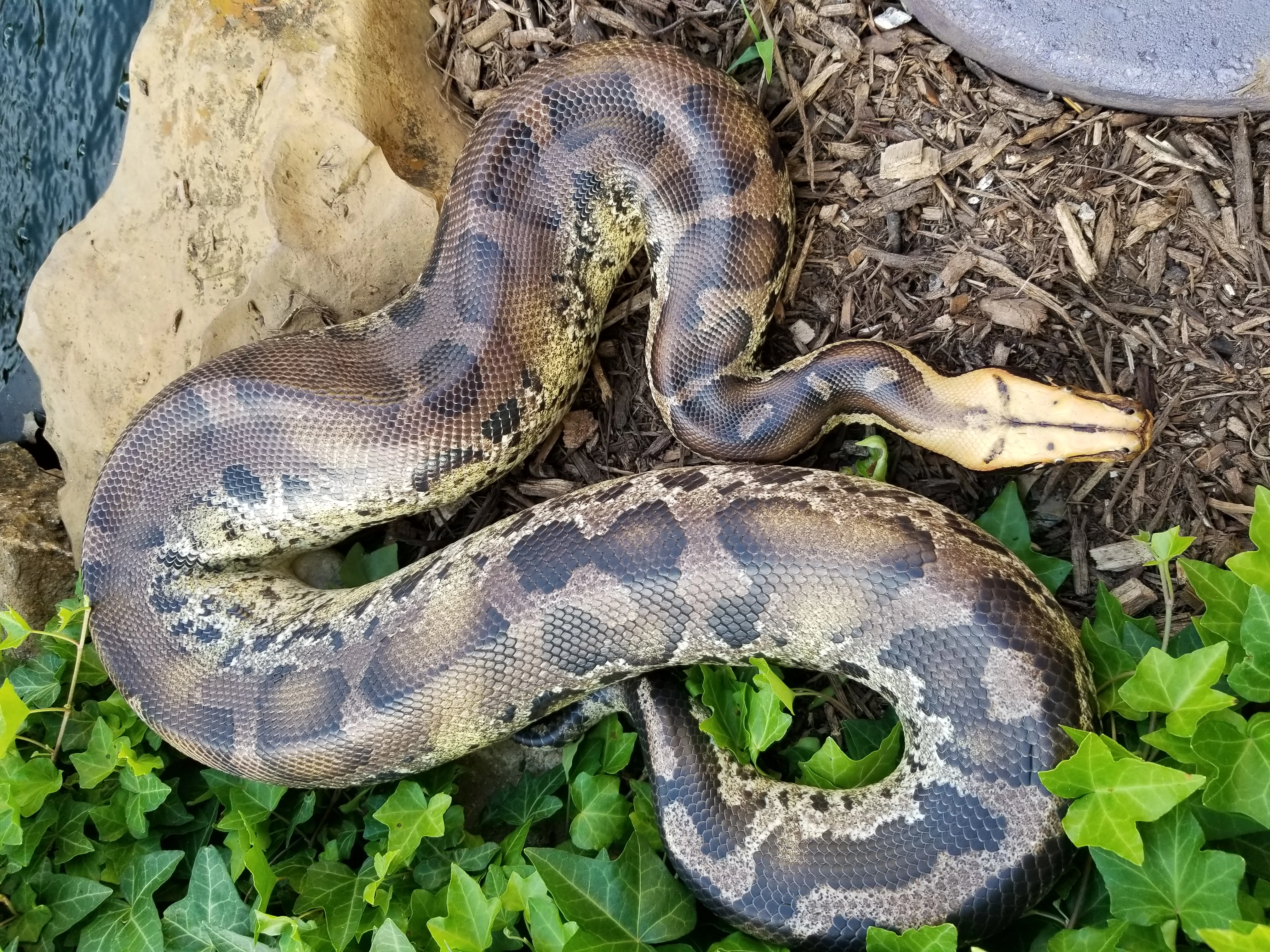
Pumkpin Head Caramel Albino
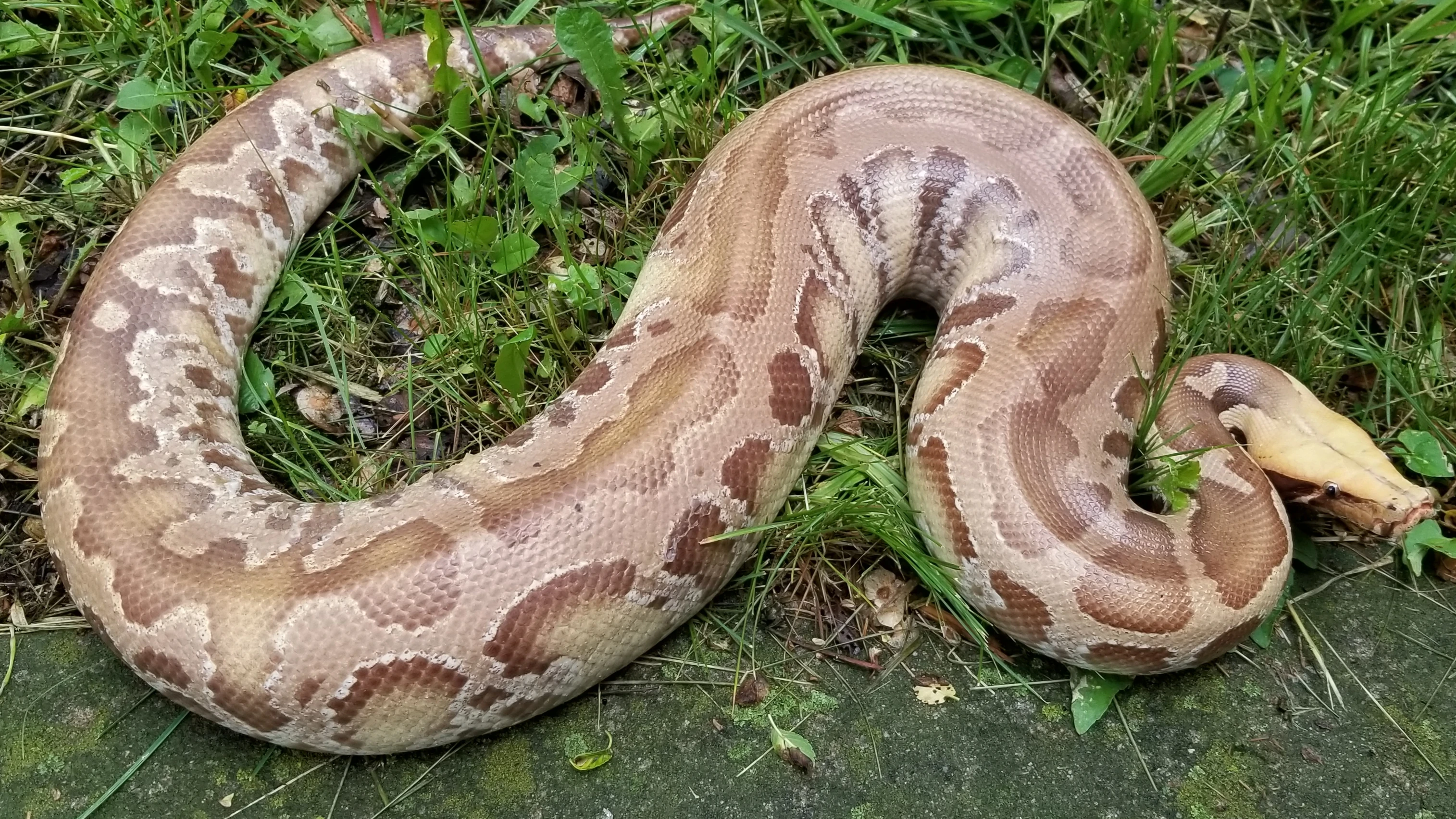
Black Head

Chrome Head, classic
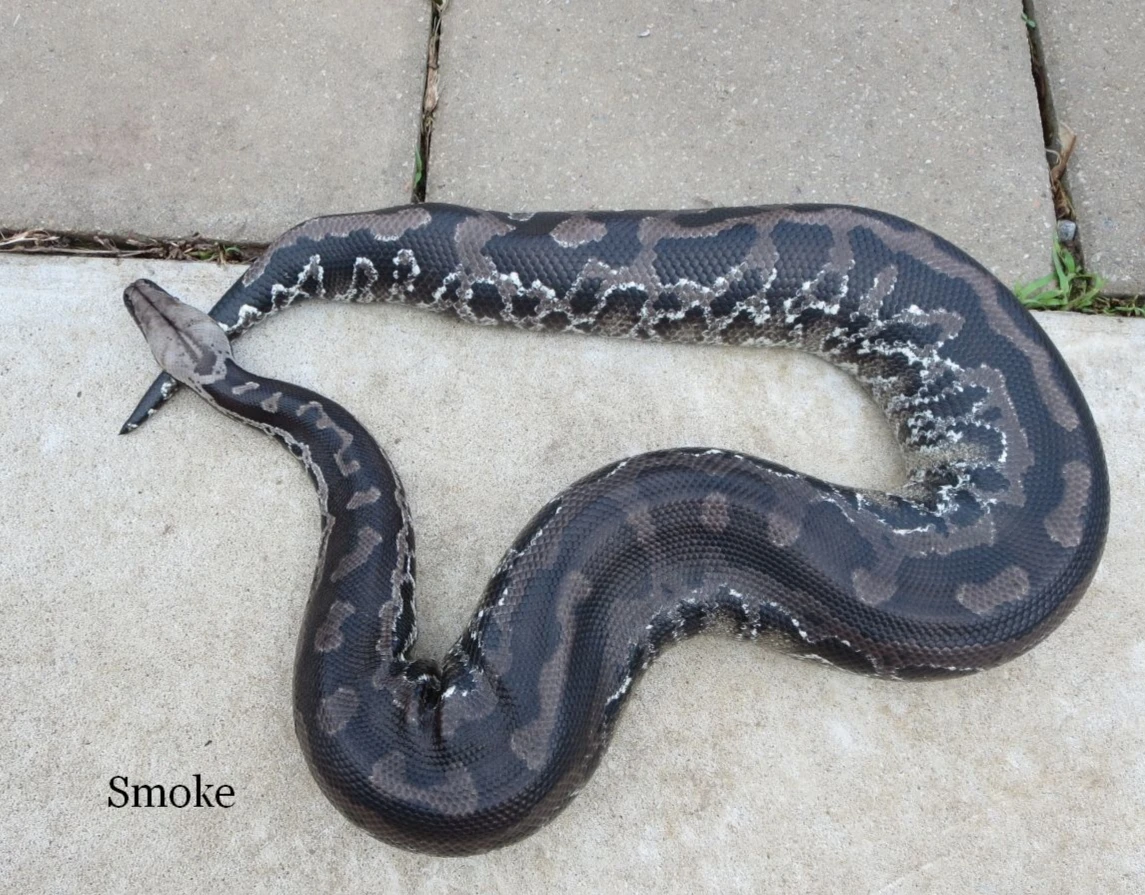
Chrome Head, light phase
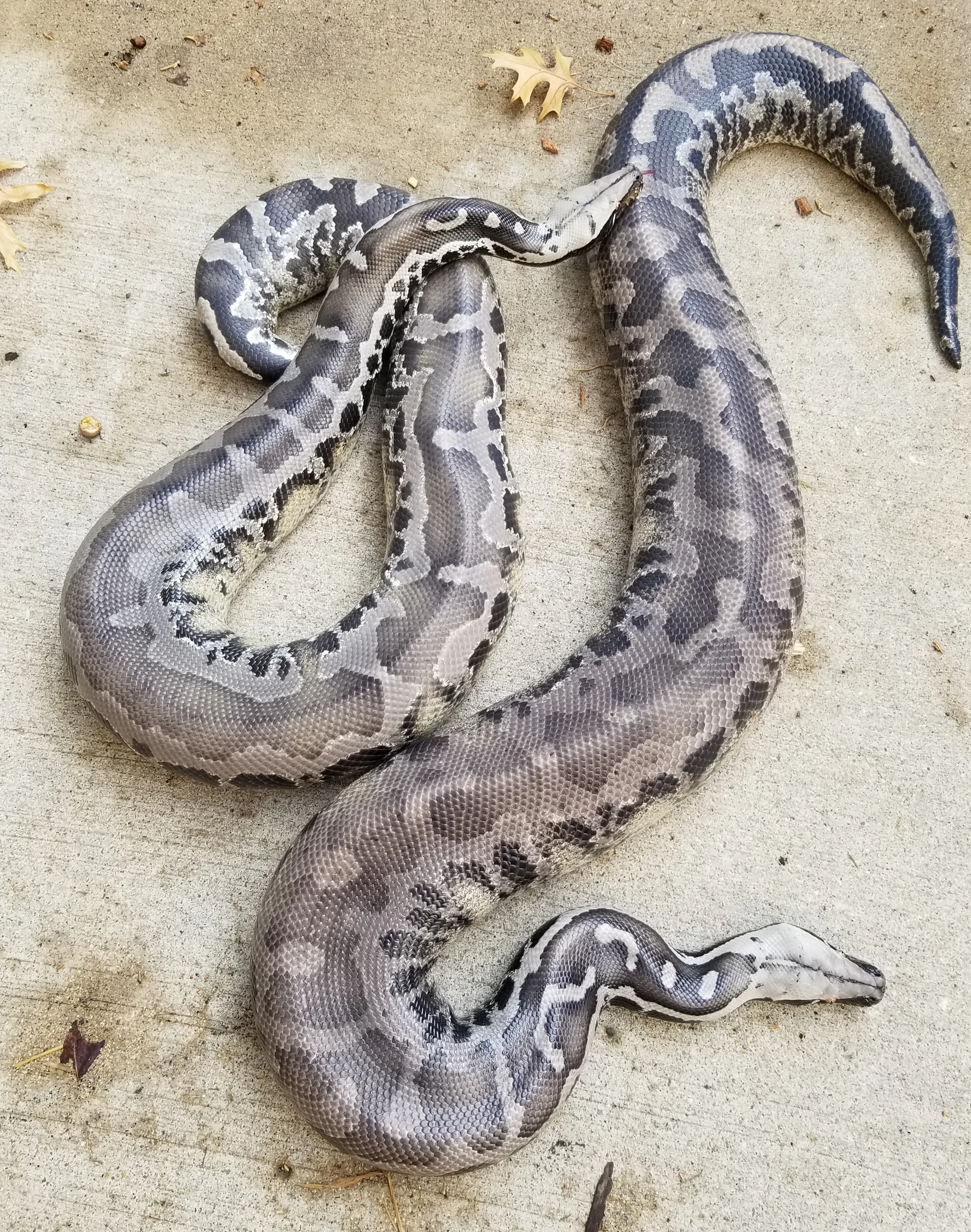
Black Head, gunmetal


